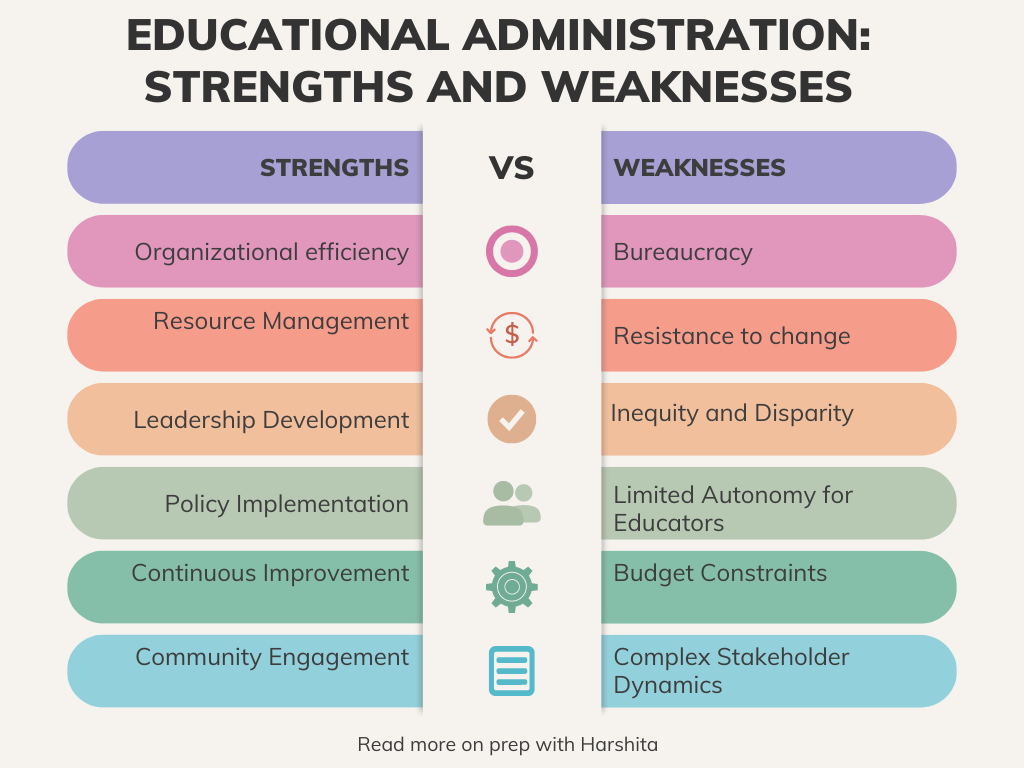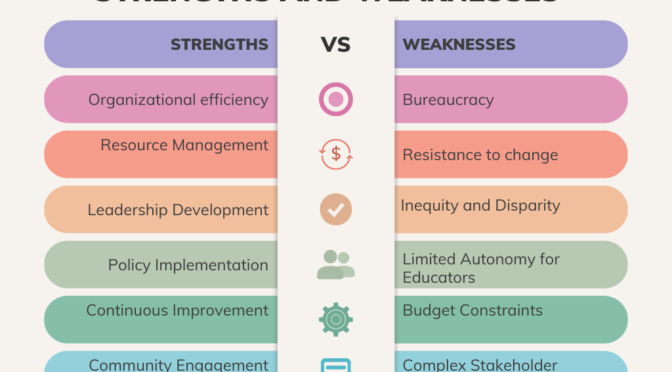Educational administration refers to the process of managing and leading educational institutions, such as schools, colleges, and universities. Like any field, educational administration has its strengths and weaknesses.
Strengths of Educational Administrations:
- Organizational Efficiency: Effective educational administration ensures that institutions work efficiently, with well-defined structures and processes. This helps in the smooth functioning of the institution.
- Resource Management: Administrators play a crucial role in managing resources such as human capital, finances, and facilities. Proper resource allocation enhances the overall quality of education.
- Leadership Development: Educational administration provides opportunities for leadership development among educators and administrators. Strong leadership is essential for the success of any educational institution.
- Policy Implementation: Educational administrators are responsible for implementing educational policies and reforms. They bridge the gap between policymakers and educators, translating policies into practical actions.
- Continuous Improvement: Administrators focus on assessing and improving the quality of education. This involves implementing strategies to enhance teaching methods, curriculum development, and student learning outcomes.
- Community Engagement: Administrators foster positive relationships with parents, communities, and stakeholders. This engagement is crucial for creating a supportive educational environment and garnering community support.
Weaknesses of Educational Administration:
- Bureaucracy: Educational institutions can become bureaucratic, with excessive paperwork, rigid rules, and slow decision-making processes. This can hinder innovation and adaptability.
- Resistance to Change: Educational systems can be resistant to change, making it challenging to implement new and innovative teaching methods, technologies, or educational policies.
- Inequity and Disparities: Administrative decisions may inadvertently contribute to inequities and disparities in education, such as unequal distribution of resources or opportunities among students.
- Limited Autonomy for Educators: Excessive control and micromanagement can limit the autonomy of teachers and educators, impacting their creativity and ability to tailor their teaching methods to the needs of their students.
- Budget Constraints: Educational institutions often face budget constraints, which can limit their ability to provide necessary resources, infrastructure, and professional development opportunities for educators.
- Complex Stakeholder Dynamics: Educational administrators must navigate complex relationships with various stakeholders, including teachers, parents, students, and policymakers. Balancing the diverse needs and expectations of these groups can be challenging.
- Overemphasis on Standardized Testing: In some educational systems, there is an overemphasis on standardized testing, which may lead to a narrow focus on test preparation at the expense of a broader, more holistic education.
Also Visit: Prep with Harshita

Also Read: Teacher role as Curriculum Practitioner


24 thoughts on “Educational Administration: Strengths and Weaknesses”